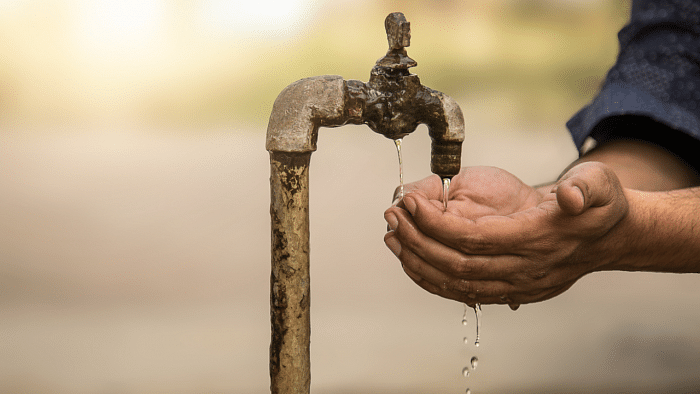
As many as 17 districts in Karnataka — from Bengaluru to the irrigated districts in the north — will become highly vulnerable to water crises, a report by Environmental Management and Policy Research Institute (EMPRI) warns.
Researchers took district-level data from government sources and used 20 indicators to come up with a vulnerability rank. The indicators included surface and ground water availability, forest area, population density, demand for water for domestic, agriculture, livestock and industry, average mean annual rainfall and temperature data of several decades.
Bangalore Rural topped the list of most vulnerable districts, coming above the arid districts of north Karnataka. It was followed by Raichur, Chikkaballapur, Kalaburagi, Gadag, Koppal, Ballari, Bijapur, Bidar and Belagavi. Bangalore Urban came 12th, just one place below Kolar, Bagalkot, Davangere, Yadgir, Chitradurga and Tumakuru were also on the list.
The report titled ‘Mapping Climate Change Vulnerability: An assessment of water resources sector across different districts of Karnataka’ warned policymakers about the dangers ahead.
Based on the indicators, Udupi was the least vulnerable, followed by Uttara Kannada, Dakshina Kannada, Kodagu and Shivamogga. The remaining ones were seen as moderately vulnerable. However, climate change may bring completely new challenges in these areas.
The report noted that Karnataka’s climate action plan has already warned of significant variation in rains and river streamflow. Simulated models based on an a relatively optimistic global emission scenario (RCP 4.5) had hinted at large-scale changes. “The upstream of the basin (primarily in the Western Ghats) shows a significant decreasing trend and the downstream stretches show an increasing trend,” it said.
The variation means heavy rains will hit areas that are not equipped to handle the water flow while the Ghats that see torrential rainfall start to see a decline in water availability. For example, the streamflow in Hemavathi river near Sakleshpur will go down by 60.11 per cent while the Cauvery stream in Kollegala will see 40.98 per cent increase and the Shimsha stream near Thorekadanahalli will swell by 27.61 per cent.
N Hema, principal investigator and lead author, said the vulnerability study was a preliminary report that needs to be followed up with district-level models for different emission scenarios. “The present study gives enough information to stress the need for adaptation and mitigation measures. The district-level models will help come up with specific policies needed to prepare people for the crisis,” she said.
EMPRI DG Jagmohan Sharma said Karnataka’s water policy has already placed it on the right path. “There is a need for supply and demand-side management to conserve water. Aggressive adoption of measures like drip irrigation, rain water harvesting and reuse of treated water is required.”
He said the drivers of vulnerability have to be identified at district level and tackled with local interventions even as the government works on larger instruments like carbon credits.